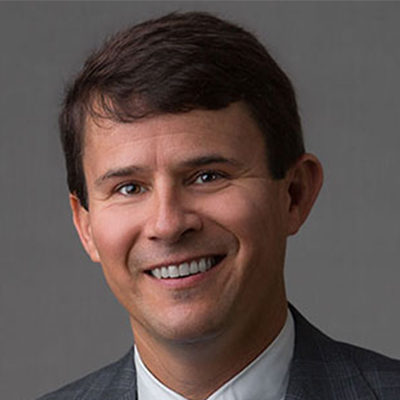Planning / Article
-
 Read More
Read MoreIn this thought-provoking article, Wisconsin Lawyer magazine carries on the annual “What’s Hot, What’s Not “ report published by Bob Denney for more than 20 years. In fact, we featured it in The MPF Weekly every December for more than a decade.
The article covers a variety of topics important to smaller and mid-size law firms including strategic planning, talent development, business development, leadership and technology. Its contributors include:
- Sharon Nelson – Sensei Enterprises
- George Psiharis – Clio
- John Remsen, Jr. – TheRemsenGroup
- Sally Schmidt – Schmidt Marketing
- Rochelle Washington – DC Bar Association
- Ryan Whitacre – Major Lindsey & Africa
-
 Attachment
AttachmentBigLaw, with their highly paid recruiting and professional development staffs, is doing a pretty fair job articulating and enforcing the criteria to become an equity partner. Unfortunately, this is not the case for many smaller and mid-sized firms. In this brief article, David does a nice job outlining some of the best practices in this critically important area. Here are four of them:
- Clearly Articulate the Criteria for Partnership in Writing,
- Develop an Effective Annual Evaluation Process,
- Start Leadership and Business Development Training Early, and
- Have a Plan for Those Who Won’t Make It.
How is your firm doing at grooming its future owners?
-

13 Things Your Firm Must Do Today to Attract and Retain Tomorrow’s Lawyers
Read MoreThis short article (about 1,200 words) sets out what I’ve learned over the years about what law firms must do to attract and retain younger lawyers. Like it or not, today’s younger lawyers tend to want different things from their legal careers than their senior counterparts. Here are four of the things we recommend that law firms do:
- Establish and Communicate Clear Expectations
- Set Forth a Clear Path to Partnership
- Reward Performance, not Seniority
- Be Selective in Hiring – Use Psychological Assessments
Check out the article to read all 13 of them.
-

We Need to Talk: Facilitating Retirement by Helping Senior Partners Prepare
Read MoreIn many smaller and mid-size law firms, more than half of the owners are in their 60s and 70s. They typically generate most of the firm’s business. They handle leadership and management responsibilities. And they possess decades of wisdom, knowledge and skills. Yet, most smaller and mid-size firms have no formal succession plans in place. And 70% of first generation law firms do not survive their founding partners.
As we all know, succession planning is important if your firm is to survive and prosper in the coming years. It involves difficult – often emotional – issues for many firms. Too often, these issues are never discussed, and succession is neglected.
Ida’s four-page article eloquently addresses some of the challenging issues with succession planning and the retirement of senior partners. We encourage you to read it if you’re dealing with succession and transition issues at your firm.
-
 Read More
Read MoreYour law firm runs on computers and, over time, your firm’s IT systems become outdated and security risks develop. Therefore, it’s critical that your firm undertakes a periodic evaluation and examination, so make sure all systems are working properly and risks are not left unchecked for extended periods of time.
In many cases, you’re relying on your COO, your IT Director and/or your outside service provider to manage the situation. However, that reliance does not replace your ownership of this responsibility. As the firm’s chief executive officer, you are the person ultimately responsible to ensure that the IT systems and controls are aligned with the firm’s goals and legal requirements and are being managed, maintained, updated and kept current.
This short article, written especially for managing partners, outlines what an IT audit covers and the questions you should be asking your COO and/or IT Director on a regular basis.
-

In the US (except for the District of Columbia), non-law firms are prohibited from providing legal services and non-lawyers are prohibited from law firm ownership. In the meantime, law firms in Canada, Europe and elsewhere are taking advantage of their more lenient rules and regulations that allow for MDPs in their jurisdictions. Up until now, the ABA has repeatedly struck down MDPs in the US, but are things likely to change in the foreseeable future?
In this set of articles, Susan and her team break the subject into three areas:
- Part One: A Primer
This article provides some background on the topic, including the ABA’s historic position on MDPs.
- Part Two: Subsidiaries
This article discusses wholly-owned law firm subsidiaries, such as lobbying, wealth management, and real estate title services.
- Part Three: Integrated Multi-Disciplinary Practices
This one presents a much more comprehensive, integrated approach to provide a full array of professional services to clients, including recent efforts undertaken by Hogan Lovells and Duane Morris.
Although some large firms are testing the waters, we believe that fully integrated MDPS are not likely to be widely embraced by smaller and mid-size law firms in the foreseeable future.
Click here for Part One – A Primer
Click here for Part Two – Subsidiaries
Click here for Part Three – Integrated Multi-Disciplinary Practices
- Part One: A Primer
-
 Attachment
AttachmentAdhering to the concept that bigger is not always better, Roger leads a team of former “BigLaw” partners who’ve built an exceptional 30-lawyer firm in New York, one of the most competitive legal markets in the world. They are exceptionally client-focused and perform highly sophisticated work.
Roger’s article examines what tomorrow’s lawyers and law firms must do to adapt to the changing marketplace. Noting that BigLaw’s ability to change is akin to “turning an aircraft carrier,” he sees significant opportunities for smaller and mid-size firms to emerge as the real winners.
-
 Read More
Read MoreAlthough we’re seeing a gradual uptick in law firm strategic planning, fewer than half of mid-size law firms have them. Of those with a plan, firm leaders report improved firm performance despite so-so implementation efforts. Click here to read an article that John Sterling and I wrote for Legal Management magazine a few years ago on this topic.
So how is BigLaw doing when it comes to strategic planning? In this article, we learn that although almost every large US law firm has a strategic plan, they struggle with implementation, too. Here are some of the finding in the article:
- Ninety-seven percent (97%) of BigLaw (the AmLaw 200 firms) have a firm-wide strategic plan.
- Fifty-seven percent (57%) described their plans as “brief and targeted on a few priorities.”
- Generally, bigger firms have more complex and ambitious plans.
- Sixty-five percent (65%) collect input from practice group leaders. Fifty-three percent (53%) gather input from all partners. Fifty percent (50%) hire an outside consultant to assist with the process.
- Yet BigLaw struggles with implementation with only three percent (3%) of firm leaders indicating that their firms had achieved “almost all” of their planning objectives.
As you know, we believe that every law firm, regardless of size and practice mix, needs a firm-wide strategic plan that sets forth where the firm wants to go and how it plans to get there. Importantly, we advise firms to keep the plan simple, realistic and achievable focusing attention on just three short-term goals and objectives.
-
 Attachment
AttachmentIn December, we published MPF Insight (see below), a report that summarizes results of our Leadership & Governance Survey and presents recommendations to law firm leaders. Since then, The National Law Review has written a series of four articles presenting its analysis of and commentary about the report. The final installment covers succession planning, an often neglected aspect of law firm management. Consider the following:
- For 63% of law firms, more than 50% of firm revenue is generated by lawyers older than 60 years.
- 30-40% of lawyers in private practice have begun the retirement process.
- 70% of first generation law firms do not survive their founding partners.
- 22% of firm leaders say they are grooming a successor for the leadership role.
If you and your partners care about legacy and the long-term sustainability of your firm, succession planning should be an ongoing process, and planning around the retirements of your key people should start much earlier than you think. Now is the time to start planning for the future.
-

Competing in a Changing Marketplace
Read MoreBob thinks a lot about law firm leadership. He’s former Chair of the ABA’s Law Practice Division and the ABA’s Diversity Committee. He also served as Managing Partner of his law firm, English Lucas Priest Owsley (ELPO Law, for short), for many years. In these roles, he thinks a lot about the unparalleled changes occurring in the legal profession, and he writes about what firm leaders can and should be doing to encourage change and drive innovation within their firms.
“In many ways, we’re our own worst enemy when it comes to advancing our law firms and in keeping up with what clients want and need,” says Bob. “We are truly in a change or die scenario. The sooner law firms realize this, the better prepared they’ll be to thrive.”
This is a strong, powerful article written by one of your peers. It should grab your attention.
-

Competing in a Changing Marketplace
Read MoreBob thinks a lot about law firm leadership. He’s former Chair of the ABA’s Law Practice Division and the ABA’s Diversity Committee. He also served as Managing Partner of his law firm, English Lucas Priest Owsley (ELPO Law, for short), for many years. In these roles, he thinks a lot about the unparalleled changes occurring in the legal profession, and he writes about what firm leaders can and should be doing to encourage change and drive innovation within their firms.
“In many ways, we’re our own worst enemy when it comes to advancing our law firms and in keeping up with what clients want and need,” says Bob. “We are truly in a change or die scenario. The sooner law firms realize this, the better prepared they’ll be to thrive.”
This is a strong, powerful article written by one of your peers. It should grab your attention.
-
 Read More
Read MoreThe major accounting firms sell their brands. Not so at the big law firms, where the individuals are the brand. Consider how attractive law firm leaders would find a firm whose brand – its name, its systems, its process, its procedures, its consistency – trumps that of its individual lawyers. A firm that thrives despite partner defections because the individual lawyers follow a script orchestrated by senior management. Are “lawyer-proof law firms” the wave of the future?
-
 Attachment
AttachmentManaging partners of the nation’s largest law firms are bullish about 2016 according to this annual survey of leaders of AmLaw 200 law firms. One-hundred four 104 firm leaders participated and were asked about overall conditions of the legal industry and their firm’s outlook for the coming year. This five-page article discusses survey’s findings. Among the highlights:
- Thirteen percent (13%) of firm leaders are “very optimistic” about 2016. Another sixty-eight percent (68%) are “somewhat optimistic.”
- Sixty-eight percent (68%) predict the US economy will maintain its current pace of growth in 2016.
- While eighty-eight percent (88%) of firm leaders say their firms will increase their total lawyer headcount, seventy-five percent (75%) anticipate asking some senior partners to leave.
- Eighty-eight percent (88%) project that billing rates will remain flat in 2016 compared to 2015, the highest percentage since 2009.
- Seventy percent (70%) of managing partners are concerned that many partners are staying too long.
- On average, fourteen percent (14%) of firm revenue is achieved through alternative fee arrangements, the same percentage as the last few years.
What’s your firm’s outlook for 2016? We hope it’s looking good!
-
 Read More
Read MoreEd has served as Managing Partner of Brooks Pierce, a 90-lawyer firm with three North Carolina office locations, since 2000. He focuses on law practice management and strategic leadership, and is especially interested in the evolution of the legal profession. In the face of unprecedented change, he likes MidLaw’s chances and discusses ten challenges for which they are well-positioned, including:
- Technology,
- Talent Management,
- Change Management, and
- Globalization.
-

Five TrendsClients Want You to Jump On
Read MoreIn this short article, Michael shares five emerging trends he’s been seeing in the marketplace for legal services. These early seeds of change present new opportunities for those law firms that act now and seize the moment. Here are the five trends he discusses in the article:
- Clients want law firms to bring an institutional mindset to the relationship.
- Law firms are beginning to teach associates the “soft- skills” of business development and client service.
- More law firms are implementing client feedback programs to drive change. (We’ve been recommending client feedback programs for years!)
- Clients want succession plans as senior lawyers working on their matters move toward retirement.
- Clients want stability in their relationships with outside counsel and openly express their concerns about lateral movement.
Michael contends that these five "early trends" will snowball into big trends, and that opportunities abound for those firms that get a jump on the competition.
-
 Read More
Read MoreWhen it comes to succession planning within a law firm, we often hear from managing partners: “I’m concerned that our young partners don’t have what it takes to run this firm in the future. They lack the drive, commitment and work ethic to become owners of the business.” And from young partners, we hear: “The senior partners won’t let go. They cling to control and won’t introduce us to their clients and referral sources.” Firms need to find ways to bridge the gap if they want to be around in 2020 and beyond. Sue shares her advice to help your firm manage its succession process.
-
 Read More
Read MoreThis article discusses the difference between legacy law firms – those where the firm comes first and where there’s sharing, teamwork and investment in the future – and mercenary firms – those that operate more like a collection of sole practitioners sharing office space. August believes that law firms that lean toward legacy are better off in the long run. We agree. In the article, he offers suggestions on how you can move your firm in the right direction.
-
 Attachment
AttachmentIf you’ve been following us over the years, you know that we regularly survey firm leaders about topics relating to law firm leadership and management. And we consistently find that succession planning – in areas such as firm leadership, legal knowledge and expertise, and client relationships – is among the most neglected aspects in the business side of running the firm. In fact, most firm leaders give their firms poor marks in this most important area. In this article, we highlight finding of our most recent survey and offer best practices for succession planning and management. Here are few highlights of the article:
- Seventy percent (70%) of first generation firms do not survive their founding partners
- Elect a Deputy Managing Partner and charge him/her with important firm-building projects
- Create client teams and industry practice groups with both senior and junior lawyers actively involved
- Require senior lawyers to present annual transition plans at the outset of each year
These are good ideas to transition a law firm into the future. What is your firm doing to ensure its long-term success?
-
 Attachment
AttachmentYou may recall that, back in March, our MPF Leadership Matters online survey asked about strategic planning and the keys to successful implementation. The results of that survey serve as the basis for our article that appears in the June issue of ALA’s Legal Management magazine.
The bottom line: More firms are embracing strategic planning than ever before – and they’re seeing positive results from their efforts.

















